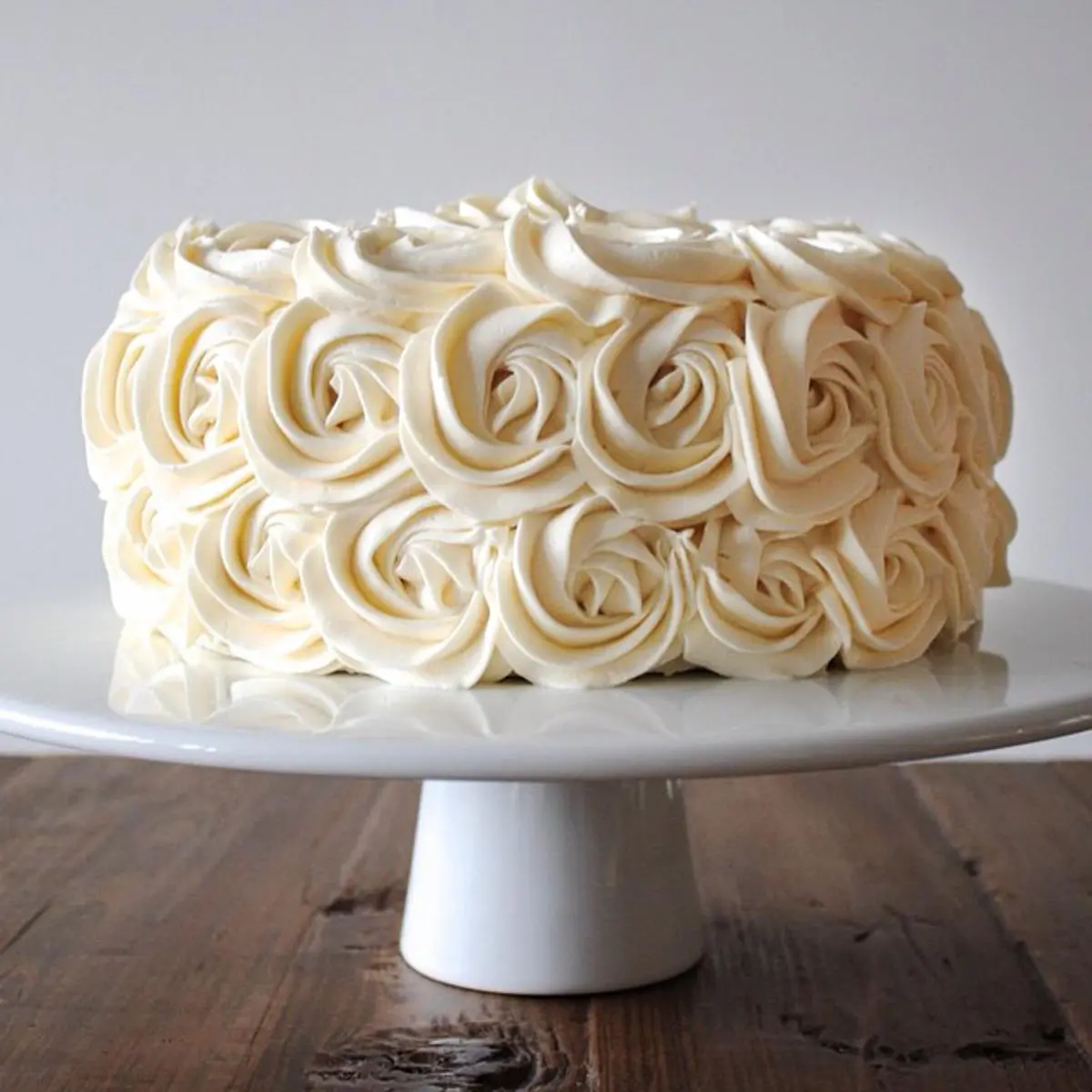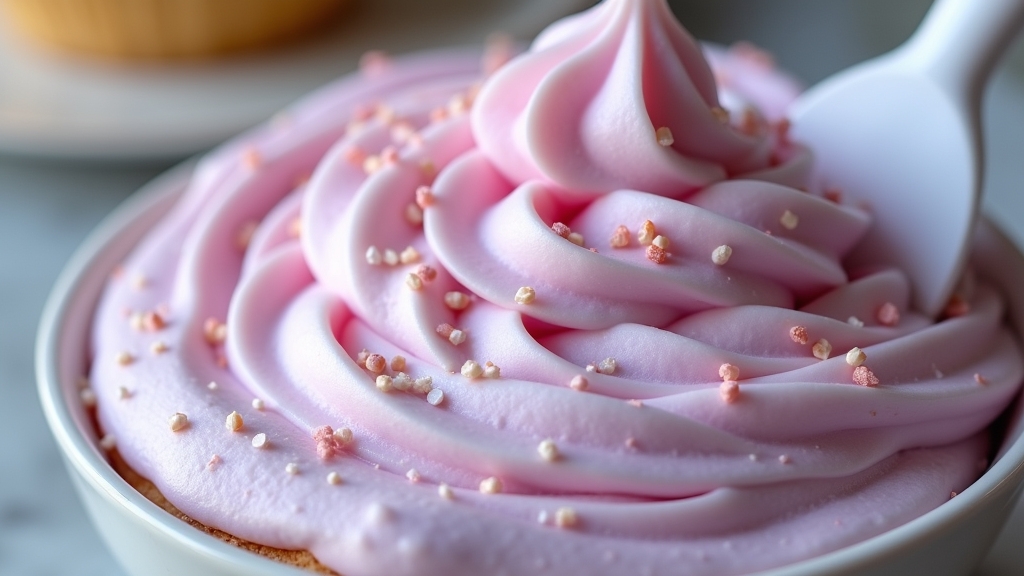For a classic buttercream frosting, I combine room temperature unsalted butter with powdered sugar until it’s creamy. Then, I whisk in heavy cream, vanilla extract, and a pinch of salt. Whipping it until fluffy gives that perfect silky texture. You can customize it with different extracts or embellish with food coloring for a vibrant look. It’s an essential topping for any cake! There’s so much more to explore about frosting techniques and variations that can elevate your dessert experience.
History
When I think about the history of cake frosting, I can’t help but marvel at its evolution from simple sugar and egg whites to the rich, creamy concoctions we enjoy today. The frosting origins can be traced back to ancient cultures, where sweetened mixtures adorned breads for special occasions. As I explore cultural variations, I discover how different regions embraced unique ingredients—think of the use of fruit purees in Middle Eastern treats or the decadent buttercreams that emerged in Europe. Each innovation reflected local tastes and traditions. The advent of industrialization further transformed frosting, introducing new techniques and flavors. It’s fascinating to witness how frosting has grown, becoming a canvas for culinary creativity, while still honoring its humble beginnings.
Recipe
Creating the perfect cake frosting is crucial for any baking enthusiast. Whether you’re frosting a birthday cake, a holiday treat, or a simple afternoon snack, the right frosting can elevate your dessert to the next level. This recipe offers a classic buttercream frosting that is both creamy and sweet, making it an ideal choice for a variety of cakes. With just a few simple ingredients, you’ll have a delightful frosting that can be easily customized with flavors or colors to suit your needs.
To obtain that perfect consistency, it’s important to start with room temperature butter. This allows the butter to blend smoothly with the sugar, creating a light and fluffy texture that spreads beautifully. You can also experiment with different extracts like vanilla, almond, or lemon to add a unique twist to your frosting. Once you master this basic recipe, you can create endless variations to match your cake or occasion.
Starting with room temperature butter is key for a light, fluffy frosting that can be customized with various flavors.
Ingredients:
- 1 cup unsalted butter, softened
- 4 cups powdered sugar
- 1/4 cup heavy cream or milk
- 2 teaspoons vanilla extract
- A pinch of salt
Instructions:
In a large mixing bowl, beat the softened butter on medium speed until creamy and smooth. Gradually add the powdered sugar, mixing on low speed until combined. Then, add the heavy cream (or milk), vanilla extract, and a pinch of salt. Increase the speed to medium-high and beat for an additional 3-5 minutes, until the frosting is light and fluffy. If the frosting is too thick, add a little more cream; if it’s too thin, add a bit more powdered sugar until you reach your desired consistency.
Extra Tips:
To achieve a beautifully smooth finish, verify your cake is completely cool before applying the frosting. For a professional touch, use a spatula or a piping bag with your favorite tip to create decorative patterns. If you’re planning to color your frosting, gel food coloring works best, as it won’t alter the consistency. Remember to store any leftover frosting in an airtight container in the refrigerator, where it can last for up to a week. When ready to use, simply re-whip it to restore its texture. Enjoy your baking!
Cooking Steps
Let’s get started on making that perfect cake frosting! First, I gather all my ingredients to guarantee everything’s within reach. From mixing the butter and sugar to whipping it into that light and fluffy texture, each step is essential for achieving the ideal spread.
Step 1. Gather Your Ingredients
To whip up the perfect cake frosting, I typically gather six essential ingredients that transform ordinary cakes into delightful masterpieces. First, I choose high-quality unsalted butter for that rich flavor. Next, I grab powdered sugar, guaranteeing its fineness for a smooth texture. I also include heavy cream, which adds creaminess, and vanilla extract for a touch of warmth. Depending on my mood, I might incorporate cocoa powder or food coloring to create unique twists. Measurement accuracy is vital—using a scale for the butter and sugar guarantees consistency, while a measuring cup for liquids keeps everything perfectly balanced. With the right ingredient types in hand, I’m ready to set out on my frosting adventure!
Step 2. Mix Butter and Sugar
Starting with softened unsalted butter, I scoop it into my mixing bowl, ensuring it’s at room temperature for that perfect creaminess. I prefer using European-style butter for its higher fat content, which adds a luxurious texture to the frosting. Next, I grab my sugar varieties—granulated for sweetness and a touch of powdered sugar for that velvety finish. As I blend them together, I can feel the butter transforming, becoming lighter and fluffier. I use a hand mixer, starting on low to avoid a sugar cloud, then ramping up for maximum aeration. The key is to mix until it’s pale and fluffy, creating a base that promises to elevate my frosting game to new heights.
Step 3. Add Flavoring Extracts
With the butter and sugar mixture now perfectly fluffy, it’s time to enhance the flavor profile of the frosting. I love experimenting with different extract types to create unique flavor pairings. Start by adding a teaspoon of pure vanilla extract for a classic touch; it’s a must-have! If you’re feeling adventurous, consider infusing your frosting with almond or coconut extract for a tropical twist. For a more vibrant flavor, a splash of lemon or orange extract can elevate your frosting to a whole new level. Just remember, balance is key—too much can overpower the sweetness. Stir gently until well combined, and you’ll have a frosting that not only tastes divine but also sparks creativity in every bite!
Step 4. Whip Until Light and Fluffy
Now it’s time to whip the mixture until it’s light and fluffy. I grab my electric mixer, ensuring the whisk attachment is securely in place. Starting on a low speed, I gradually increase the intensity, embracing effective whipping techniques. As the mixture begins to blend, I pay close attention to fluffiness factors like temperature and speed; ensuring my ingredients are at room temperature makes a noticeable difference. I whip for about 3-5 minutes, watching the transformation unfold. The mixture should double in volume and develop a silky texture. When I see soft peaks forming, I know I’m on the right track. This is the key moment; achieving that ideal lightness elevates my frosting, creating a delightful finish for any cake.
Step 5. Spread Frosting Evenly
Once the frosting has reached that perfect light and fluffy consistency, I plunge into the delicious task of spreading it evenly over the cake. I grab my trusty offset spatula, my favorite spreading tool, ensuring a smooth application. Using innovative frosting techniques, I start from the center, working my way outwards in gentle, sweeping motions. This method not only promotes even coverage but also reduces the risk of tearing the cake. For the edges, I tilt the spatula slightly, creating a clean line that enhances the cake’s visual appeal. If I notice any gaps, I simply add a dollop of frosting and blend it seamlessly. With patience and precision, I achieve a beautifully frosted masterpiece ready for the final touches!
Nutritional Guide
Understanding the nutritional aspects of cake frosting can transform how you enjoy your desserts. By being mindful of caloric content and making smart ingredient substitutions, you can create a frosting that not only satisfies your sweet tooth but also aligns with your dietary goals.
Here’s a quick overview:
| Nutrient | Traditional Frosting | Healthier Options |
|---|---|---|
| Calories | 350 per cup | 150 per cup |
| Sugar | 50g | 20g (with alternatives) |
| Fat | 20g | 5g (using avocado) |
These insights let you indulge while maintaining balance. Experimenting with different ingredients can lead to delightful, innovative frosting options that still taste amazing!
Final Thoughts
Creating a delicious cake frosting can be a rewarding experience, especially when you’re mindful of its nutritional impact. As I’ve explored various frosting variations, I’ve discovered that innovation doesn’t have to come at the expense of health. Whether you opt for a classic buttercream or a whipped yogurt frosting, each choice offers a unique flavor profile to elevate your cake.
Additionally, mastering different decorating techniques can transform your dessert into a work of art. From elegant swirls to playful piped designs, the possibilities are endless. Embrace your creativity, and don’t shy away from experimenting with flavors, colors, and textures. Ultimately, the joy of frosting is not just in the taste but also in the beauty you create. Happy decorating!
Frequently Asked Questions
Can I Use Margarine Instead of Butter for Frosting?
I’ve experimented with margarine vs butter in frosting, and while margarine can create a softer texture, it often lacks that rich flavor butter provides. For the best results, I prefer using butter in my frosting.
How Long Can Frosting Sit at Room Temperature?
I’ve found frosting can sit at room temperature for about two hours without compromising its shelf life. For ideal freshness, store it in a cool place, avoiding direct sunlight and heat. Happy baking!
Can I Freeze Leftover Frosting?
Yes, I can freeze leftover frosting! For best frosting storage, I use airtight containers and label them with dates. When I need it, I simply thaw it in the fridge overnight. Freezing tips make it easy!
What Is the Best Way to Color Frosting?
Imagine swirling vibrant colors into your frosting. I love using gel food colors for bold shades, but natural dyes, like beet juice or turmeric, bring unique hues and a delightful twist. It’s all about creativity!
How Do I Fix Runny Frosting?
If my frosting’s too runny, I adjust the consistency by adding powdered sugar gradually. I mix it well until I achieve that perfect spreadable texture, ensuring every bite is delightfully smooth and beautifully decorated.
Conclusion
As I spread the frosting over my freshly baked cake, I’m reminded of life’s sweetest moments. Just like that velvety layer transforms a simple dessert, love and care can elevate everyday experiences. I once shared a slice with my grandmother, who said, “Frosting is just happiness on a plate.” When you whip up this recipe, remember: you’re not just creating a treat; you’re crafting memories that will linger long after the last bite has been savored.

Cake Frosting Recipe
Ingredients
Equipment
Method
- In a large bowl, beat softened butter with a mixer on medium speed until smooth and creamy (about 2 minutes).
- Slowly add powdered sugar, 1 cup at a time, mixing on low speed to avoid a sugar cloud. Scrape down the bowl as needed.
- Pour in vanilla extract, salt, and 2 tbsp of heavy cream. Mix on medium-high until fluffy (about 2-3 minutes). If too thick, add more cream (1 tsp at a time).
- For stiffer frosting (for piping), add a bit more sugar. For softer frosting (for spreading), add more cream.
- Spread or pipe onto cooled cakes/cupcakes.
Notes
- Storage: Keep frosted cakes at room temperature for up to 2 days or refrigerate for up to 1 week. Bring to room temperature before serving.
-
Variations:
- Chocolate Frosting: Add 1/2 cup cocoa powder.
- Cream Cheese Frosting: Replace 1/2 the butter with cream cheese.
- Vegan Option: Use plant-based butter and non-dairy milk.

